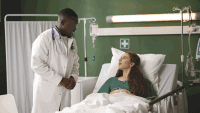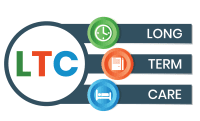Nurse staffing is a complex issue. Matching the right nurse to the right patient at the right time requires an understanding of the individual patient’s need for care, nurse characteristics, workflows, and the context of care, including organizational culture and access to resources.
Many experts believe patient acuity is an important component of nurse staffing because acuity-informed staffing approaches have been shown to improve patient outcomes and enhance nurse satisfaction. Patient acuity systems have been around for many years, but earlier systems required extra work by nurses and produced subjective results. Nurse leaders hesitated to adjust staffing when every patient was described as having “high needs.” Current technology used to generate acuity scores in today’s systems enables objective, valid, and reliable measures that can inform staffing decisions.
Massachusetts recently passed legislation requiring, among other things, acuity-adjusted staffing in intensive care units (ICUs). Therefore, nurses in Massachusetts are now discussing strategies for using acuity to optimize patient care.
A panel of nurse leaders explored this issue at a roundtable, “Using Acuity: Optimizing Patient Care and Nursing Workload,” held in December 2015. The panel presented research and real-life examples to illustrate how astute determination of patient acuity can optimize patient outcomes and help balance nurse workloads. (See Who, what, when, where, and why.)
The panel discussion was hosted by CeCe Lynch, MS, RN, NEA-BC, FACHE, vice president of patient care services and chief nurse executive at Lowell General Hospital (LGH) in Lowell, Massachusetts. The moderator was Lillee Smith Gelinas, MSN, RN, FAAN, Editor-in-Chief of American Nurse Today and system chief nursing officer for CHRISTUS Health.
Using acuity to optimize patient care and nursing workload
The goal of the roundtable, Lillee Gelinas, MSN, RN, FAAN, began, was to present information and tools for nursing leaders to implement in their organizations. “We want to stimulate a national conversation on this important topic,” she said. “How do we use acuity to optimize outcomes through nurse staffing?” Gelinas discussed the impact of the Affordable Care Act and the challenge to adopt the Triple Aim: better access, better quality care at lower cost. She also pointed out that healthcare organizations are looking through the lens of state legislation focused on safe nurse-patient ratios. (See Nurse staffing legislation.) Whatever the motivation, Gelinas said, “At the end of the day, we’re trying to achieve better care at lower cost so we can have a viable healthcare system.”
Gelinas noted that this era is a challenging one for nursing, with competing pressures for both nursing and healthcare dollars. Because nursing salaries are the largest operational expense in acute care, many organizations consider cutting nursing positions when they have to reduce costs.
At the same time, though, it’s an exciting time for nursing. One example is the electronic health record (EHR), which makes rich clinical data available; computer analysis of this data offers better decisional support for nurses.
Panel leaders were asked to share their expertise on patient acuity-adjusted staffing, exploring the question: How do we ensure patients get the care they need while creating a safe, effective work environment for nurses?
Before introducing the first speaker, Gelinas discussed the problem of variations in defining and implementing acuity-adjusted staffing in the more than 5,600 hospitals across the country. For the purpose of this panel discussion, she defined acuity as the individual patient’s need for care.
Shared governance: The key to implementing change
Andrea Erickson, MSN, RN, CNML, director of inpatient critical care services at LGH, spoke of the large task her organization faced as it worked to comply with the Massachusetts staffing bill passed in November 2014. Using the shared governance model to guide its journey, LGH began to develop and implement an acuity tool to meet the state’s January 2017 deadline.
The shared governance model, Erickson explained, proved vital to LGH as it worked toward implementing those changes. (See Shared governance model.) “Shared governance gives nurses power in their practice,” she said. “It gives them a voice, which promotes innovation and allows them control over their practice. It lets nurses extend their influence beyond their unit walls and permits staff in the leadership team to share in the decision making process.”
The shared governance model at LGH keeps the patient and family as the central focus, with unit-based councils and evidence-based practices on the second tier, followed by other councils and committees that funnel up through the coordinating council. The acuity-tool advisory committee began the process for developing an acuity tool by identifying key stakeholders, including management, educators, informatics experts, and staff RNs across both campuses. (See Key stakeholders.) The aim, Erickson said, was to include individuals with varied levels of experience who worked varied shifts.
Erickson explained, “We used the Johari window concept to identify stakeholders based on two parameters — interest and power. We focused on those who fell into the high-interest, high-power section of the grid.”
The committee then conducted a survey to determine which indicators determined high acuity and which warranted 1:1 or 1:2 nursing care. After the survey was completed, the committee developed a task force of nursing administrators, informatics experts, educators, and 6 to 10 staff RNs who met and communicated regularly. Erickson remarked, “We relied heavily on email and one-to-one meetings in both ICUs to identify best practices related to patient acuity, whether they were practices occurring in Massachusetts or other states with mandated safe staffing ratios.” The organization maintained quality reporting, including central line–associated bloodstream infection rates, catheter–associated urinary tract infection rates, and pressure ulcer and patient falls incidence.
Erickson stressed the importance of seeking to understand how these changes affect work areas, resources, and staff educational needs. “Change takes hard work and requires engraining the culture,” she pointed out. “This kind of project has to be nurtured and grown from beginning to end.” She emphasized the necessity of preserving nursing’s voice in the process. “At the end of the day, we want an acuity-tool system that fulfills requirements of the law, but we don’t want to lose nursing judgment along way,” she said. “We must strike a balance between science and judgment, marked by open dialogue, trust, and teamwork.”
Acuity-adjusted staffing linked to better outcomes
Eileen T. Lake, PhD, RN, FAAN, Jessie M. Scott Term Chair in Nursing and Health Policy at the University of Pennsylvania School of Nursing, presented research on acuity-adjusted nurse staffing as it relates to preterm infant outcomes. Among the 912 neonatal ICUs (NICUs) in the United States, sizable variations in mortality exist that can’t be attributed to infant factors, Lake said.
The goal of measuring acuity-adjusted staffing was threefold, Lake explained, “First, to look at how infant acuity relates to the assignment a nurse receives. Second, to see how accounting for acuity and staffing relates to infant outcomes. And third, to look at how nurse workload relates to infant acuity.”
Research shows staffing is significantly associated with infection among very low-birth-weight infants; 15% of these infants develop an infection, which in turn doubles their risk of mortality. Literature findings also reveal staffing influences the rate of breast milk at discharge. Across hospitals, a racial disparity in breast milk at discharge exists, linked to poorer staffing in hospitals with predominantly African-American patients. Of particular note, hospitals with a largely minority population had higher rates of infection and discharge without breast milk. They also had a higher degree of nurse understaffing and poorer practice environments.
Lake said that across the acuity spectrum, all of the infants had similar parent needs, including teaching, emotional support, and developmental support. “We observed that when nurses care for multiple low-acuity infants, if you add events and parent needs together, their workloads are actually higher than those of nurses who care for one or two high-acuity infants,” she noted. “This shows us that acuity has a significant relationship with staffing and outcomes but doesn’t account completely for workload.”
Lake went on to discuss the need for adequate decisional support in the NICU setting, including acuity assessment systems that apply to that setting, as well as the need to ensure that these systems are evidence based.
Acuity calculation driven by nursing documentation
Miriam Halimi, DNP, MBA, RN-BC, vice president and chief nursing informatics officer at Trinity Health in Livonia, Michigan, discussed the importance of using an electronic health system that’s integrated with nursing documentation. According to Halimi, this helps ensure that acuity-level calculation doesn’t come at the cost of direct nursing time. “We hypothesized that an acuity system that’s electronic and integrated with nursing documentation will create better and timelier information, leading to better decisions that optimize both the process and practice of nursing care,” she said. “We’re looking to leverage an acuity solution that will allow for flexibility and provide the information needed in real time to support nursing down to the unit level.”
Trinity Health, new to using an integrated acuity solution, successfully implemented a solution within a 6-month period at one of its hospitals in fall 2015; a second hospital is scheduled to go live with its solution this spring. While nursing leadership debated whether all nurses should have access to the tools, ultimately they decided that was the best way to go. Halimi said this approach provides greater transparency.
The Trinity Health planning team focused on keeping staff nurses engaged throughout the process by:
• using scheduling and acuity solutions together to provide powerful tools that empower nurses
• giving staff nurses access to acuity tools, as well as education on how to use them
• leveraging the role of a patient-outcomes expert to ensure partnership in the use of acuity tools daily.
Halimi showed a screenshot of a medical-surgical critical-care evaluation depicting how an acuity score is generated based on the nursing interventions classification and nursing outcomes classification (NOC). “For instance, in the respiratory domain, a patient on room air would be considered uncompromised and receive a score of 5. But a patient on a ventilator would be considered severely compromised, with a score of 1,” she explained. “The lower the score, the more severely deviated the patient is and the more nursing care he or she needs. Therefore, the level of acuity is higher.” The system calculates acuity scores every 4 hours, with scores generated 2 hours before shift change, to ensure the most updated scores. This helps identify appropriate staffing for the next shift. (See Nursing documentation and acuity levels.)
How does an integrated acuity system work? By entering and saving clinical documentation in the EHR, which is sent automatically to the acuity solution. The acuity solution maps the observations and values using the NOC and indicator values. Mapping of the clinical documentation is assigned to a domain (each domain has multiple data elements), which identifies the patient’s acuity assessment within that domain.
As Trinity leaders evaluate implementation of the acuity tool, Halimi said, they’re looking at measuring such outcomes as staffing expenses, staff and patient satisfaction, and productivity. “Acuity matters with or without the [nursestaffing] law,” Halimi concluded, pointing out that acuity-adjusted nurse staffing holds importance whether or not it’s mandated by legislation. “An integrated acuity solution creates accuracy and precision in staffing, ultimately moving toward positive patient outcomes.”
Balanced staffing: Where finance and operations converge
William Dan Roberts, PhD, ACNP, data and analytics scientist at Stony Brook Medicine in Long Island, New York, moved the discussion in another direction. He addressed how patient acuity affects nurse staffing from both a financial and an operational perspective. He stressed the dynamic nature of patient acuity, stating, “It changes by the minute, by the hour, by the shift, so you want to make sure you’re able to be flexible with your staffing.”
Staffing is more than just allocating full-time equivalents (FTEs) during a budgeting process, Roberts said. Considering the FTE allocation that has been allotted is important. This includes achieving a balanced schedule based on how nurses and unlicensed assistant personnel are scheduled. From this, the allocated skill mix for the day is available for assigning to patient needs.
Roberts posed a pertinent question: How can a patient’s needs be best matched with the nurse’s skills to allow for the best nursing care, while still meeting the expected care processes and outcomes necessary for efficient and cost-effective healthcare delivery? To view his formula for achieving this, see Staffing: Financial to operational.
The forms above show the usual financial allocation of staff during the budgeting process. They incorporate Roberts’ staffing formula, which includes assignment, RN competency, and patient acuity. The staffing formula relies on operational and financial flexibility.
Roberts showed a screenshot of a nurse-staffing document depicting a breakdown of the nursing workload on a general medicine unit during the day shift, illustrating the effect of patient acuity on nursing care hours. “Predictably, we can ask, what is the nursing work going to be for that patient? Does the nurse have a balanced workload? How do we achieve that? We would reallocate resources so that nurse is able to carry the load,” he said.
Roberts went on to explore differences in demand between the medical ICU (MICU) and the medical intermediate care (MICR) unit, with a slide illustrating a higher workload demand in the MICR unit. Data aggregated from acuity calculating tools created visibility that allowed more staff coverage for the MICR unit by adding another nurse to each shift. It also enabled leaders to advocate for additional unlicensed assistant personnel as well as support staff, such as physical therapy and respiratory therapy, for the MICR unit.
Roberts closed with an encouraging message: Nursing and finance departments can work together to use the data effectively. He stressed the need for objective measures and standard terminology to ensure congruency among organizations.
Patient acuity: Realizing the clinical potential
Amy L. Garcia, MSN, RN, director and chief nursing officer for workforce and capacity management with Cerner Corporation, spoke about the exciting potential for patient acuity data to promote efficient, cost-effective care with better patient outcomes. She discussed the use of acuity to inform the assignment of nurses to patients, as well as levels of care. She highlighted this with an example of a patient who was being treated for a myocardial infarction. Garcia explained that a patient who follows the typical recovery trajectory might be ready for transfer from the ICU to a step-down unit after about 50 hours, then discharged home after about 30 hours of care on a telemetry or step-down unit.
Taking patient variance into account, Garcia pointed out, a patient who recovers more quickly than expected may be a low-acuity outlier on an ICU. Likewise, a patient who recovers more slowly than expected may be transferred to a lower level of care, resulting in the nurse having a larger workload than he or she can manage in a setting meant for lower-acuity patients. Garcia discussed the positive effect of aligning acuity with adjusted nursing hours per patient day, which promotes budget neutrality and optimizes nurse-to-patient assignments. Garcia noted that nurse-to-patient assignments are often made by dividing the available nursing hours by the number of patients and assigning the nurse to a number of beds or a geographic area. However, this practice ignores fundamental questions: How many hours of care does an individual patient need to progress toward optimal outcomes? Can that care be delivered on this unit? And which nurse is best suited to provide that care? Garcia showed an illustration of a system that provides visibility to the nursing workload, adjusted for acuity, census, and activity on the unit (See Balancing workloads).
One East Coast hospital she works with implemented acuity considerations to help balance nurses’ caseloads. “The rate of staff who called out of their shifts on med surg units dropped 42%,” Garcia said. “Nurses were able to see that their caseloads were balanced and that when they came to work, they had a good opportunity to actually make a difference. That’s what we ask for in nursing—to be able to impact patient care in a positive way. Balanced workloads are important.” She concluded that when the right nurse is aligned with the right patient at the right time, both nurses and patients benefit. “In an ideal world, organizations can view nursing as an investment rather than a cost center,” she said.
Garcia noted that the work of nursing is complex, beyond just a simple list of nursing tasks or vital signs. She shared how Cerner approaches acuity—based on the nursing work needed to change patient outcomes. Patients have a wide range of needs, including activities of daily living, physical, psychosocial, learning, perceived health (such as pain scales), and family support. Each aspect of care is important. For example, a patient who has suffered a stroke may have few medications and little technology; instead, the nurse may need to focus on swallowing, teaching self-care, or using strategies to cope with depression. Family members have much to learn to ensure a successful discharge—and that takes nursing time. The work of nursing is holistic, and acuity systems should represent the needs of the whole patient.
Nurses weigh in
In a question-and-answer period after the panel discussion, three major themes emerged.
Psychosocial needs and the nurse’s workload
Several panelists agreed on the need to improve documentation of, and consideration for, the psychosocial well-being of the patient and family. Patient and family support needs vary and hinge on many factors. We must continue to look at what organizations are doing, concretely and quantifiably, to take patient and family needs into consideration when it comes to staffing. As Garcia pointed out, “With acuity, it’s very easy to focus narrowly on a list of tasks or interventions. That’s one of the reasons Cerner uses a nursing taxonomy to help us define more broadly the holistic needs of the patient and family within the context of their personal lives.”
The churn: Workload associated with patient admissions, transfers, and discharges
Nurses spend considerable time performing and documenting admission and discharge assessments. The work can vary in intensity, depending on individual patient characteristics. For instance, admission of a patient who is unable to communicate or has complex care needs (such as a bone marrow-transplant patient) can be quite intense.
The time required to transfer patients also varies from one unit to another, relative to workflows and the facility’s physical setting. Discharge time varies, too. With a newborn infant, for example, discharge is faster if the parents have received some education before discharge day, rather than receiving all of it at the time of discharge.
Measuring nursing work intensity
Roberts stated that when considering acuity and staffing, we need to incorporate tools that account for two characteristics—the patient’s physiologic parameters, which are used to create the plan of care); and nursing work intensity, which describes the measure of work required to care for the patient. We should continue to emphasize how to measure nursing work, as well as the parameters associated with the patient’s physiologic state.
Acuity-adjusted staffing: A promising future
Although response to legislative staffing guidelines has provided a more urgent incentive for developing acuity-adjusted staffing tools, each panelist expressed optimism about acuity-adjusted staffing and the promise it holds for improving both patient outcomes and nursing workload. Nonetheless, Gelinas reiterated that an acuity score is merely a number until it’s harmonized with each patient’s unique needs. “After working with acuity systems for a while now, I believe acuity is just a number until you align it with a process or an outcome. Acuity alone is not a magic bullet,” she noted, adding that acuity must be considered within the context of the care required for a specific patient.
For a robust discussion of variables that affect staffing, including acuity, read the 2015 white paper “Optimal Nurse Staffing to Improve Quality of Care and Patient Outcomes.” Commissioned by the American Nurses Association and developed by Avalere Health, LLC, in collaboration with nurses and policy experts, this document can be used as a resource to advocate for and implementsound, evidence-based staffing plans.
Meaghan O’Keeffe is a freelance writer and clinical editor based in Framingham, Massachusetts.



















3 Comments.
Staffing according to acuity is very important for beside nurses unless you like high turnover. I work as a bedside nurse in a very busy medical center. I have seen seasoned nurses burn out and leave, And also seen baby nurses overwhelmed, frustrated, and leave because they haven’t developed the skill set in order to handle some complicated patients. Staffing by acuity is great if you know the nurses skill set, the acuity of the patients, as well as the number of patients allowed each nurse on a given floor. It takes time to make the assignments good for all. Yes it is doable, and very good for all. For example a seasoned nurse may have 4 patients which is the limit on a certain floor. 1 patient may have a feeding tube tracheostomy tube, turn every two hour, and multiple medications through several routes. It’s obvious this nurse will be busy, the majority of her day spent with this patient, her other three should be mostly self sufficient with minimal medication passes and minimal observation. The new nurse may have an easier 4 patients with minimal medication and teaching with the possibility of discharged and new admissions until she is able to care for more advanced patients, therefore the patients get quality care and the nurses feel they have done a good job and are able to go home with emotions and dignity intact. The leaders can make this happen, it will be a win win situation, the hospitals make money, the nurses are happy, outcomes are better. It just takes time and forethought. On the flip side let’s say the seasoned nurse discharges one of her minimal care patients but right after that the new nurse discharges one of her minimal care patients, a new admission is coming from a nursing home. The new patient has multiple wounds and new antibiotic orders, along with a poly pharmacy medication list, whom would this patient need to be assigned? The seasoned nurse or the new nurse? Why? Answer: It would be the new nurse because remember the season nurse already has one high acuity patient, so to be fair and equitable the new nurse would be assigned the new patient. This would be a great learning experience for the new novice nurse who has the time to examine orders look up medications administer medications and call doctors because her other 3 patients are low acuity. Thinking and balance are keys to success.
Until we can standardize practice across all scopes, leaders constantly fight to keep staffing at a bare minimum to meet financial goals for each year. Adopting and implementing an acuity-based method to determine staff levels and critical care needs makes perfect sense. However, this will be hard to align with financial goals and will be a struggle to adopt at an executive level. It would be wonderful if healthcare systems started to implement best practice for staffing and actually provide care, rather than treatment. This model can work, but it should be developed by nursing staff who still practice at the bedside and not those with limited clinical skill. If you want buy-in, you have to start with those who sustain the change.
Very sad to see nurses endorsing this dangerous staffing method. It becomes problematic with cardiac monitoring where nurses have had a very short introductory class for cardiac arrhythmias and then sporadic exposure to the monitors. Also not ideal if there are travel nurses utilized within an institution. We must maintain specialty units according to acuity and float regions in order to preserve safety and recognize unique skills among our nursing staff. It may look great for the bottom line, but has been a disaster for outcomes.